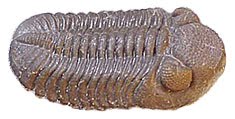Adventures on Earth For January 26 edition of The Review
By George E. Beetham Jr.
Africa is splitting apart. Recently scientists have found that the rifting of Africa is happening at a faster pace than had been expected.
The rifting of Africa is not news. The Rift Valley that parallels the eastern Africa coast has been known even before plate tectonics explained the dynamics of how continents move together and break apart.
From Ethiopia down through Tanzania, the rift valley is marked by lower elevation, lakes, and volcanoes.
Mount Kilimanjaro is one of the volcanoes that is part of the rift.
What is happening is that the continental crust of East Africa is being stretched apart by convection currents in the mantle – the region of hot viscous rock lying just under the hard crust.
Some geologists suggest the plates are pulled apart by the weight of heavy oceanic plates being pulled back into the mantle.
In any event, as the crust is stretched a block of it eventually drops down below the level of the land on either side of the rift valley. This is called a block fault, or a normal fault.
Eventually, as land drops below sea level, the sea begins to pour into the rift valley and a new ocean is formed.
The African rift valley joins another fault running the length of the Red Sea. The Red Sea was formed from a rift valley that dropped below sea level millions of years ago.
Faults that cause continental crust to fracture apart begin in a three-way fault junction. The three-way junction for the Red Sea and East Africa Rift Valley is located in the Red Sea just off the coast of northern Ethiopia.
In northern Ethiopia, the Afar Depression lies below sea level. It is separated from the Red Sea by a ridge that rises above sea level, or the sea would have already intruded into Ethiopia.
Within the Afar Depression the geology is similar to Iceland, and in some ways to Yellowstone. The crust is very thin here, so crustal rock is very hot. Vents spew lava and water heated geothermally pools, evaporates, and leaves salts and minerals behind.
The Danakil Desert of the Afar Depression lies some 500 feet below sea level, again protected from inundation by the ridge bordering the Red Sea.
In the rift valley, the land on either side of the fault is moving apart at the rate of about .8 of an inch a year. The result of this is earthquakes and volcanic eruptions as the block fault continues to drop land within the rift.
Eventually all of this activity will cause the ridge that currently keeps the Red Sea out to fracture and begin to split apart. The sea will fill in. Then the rifting of Africa will continue apace until a new sea parts the two pieces of the continent.
Geologists are watching this process as it unfolds. The sea could intrude anytime. A violent earthquake would start the process. It could happen in years, decades, or millions of years.
The fact is, we do not know how quickly the process will occur because we have never seen it happen in the time humans have been on the planet.
We understand the dynamics of plate tectonics, but actually seeing a rift open to the sea has never been seen by human eyes.
It could answer a lot of questions geologists have of just how these tectonic events play out. We have seen how plates collide to push up mountains, how oceanic plates subduct into the mantle, and how plates move past one another.
We can measure the results of these events and say mountains grow by so many inches over a certain period of time.
So geologists who study tectonics likely hope the process takes place during their lifetimes. The fact is, we might or might not see it in our lifetimes, but it is likely that some humans will get to see the birth of a new ocean.

No comments:
Post a Comment